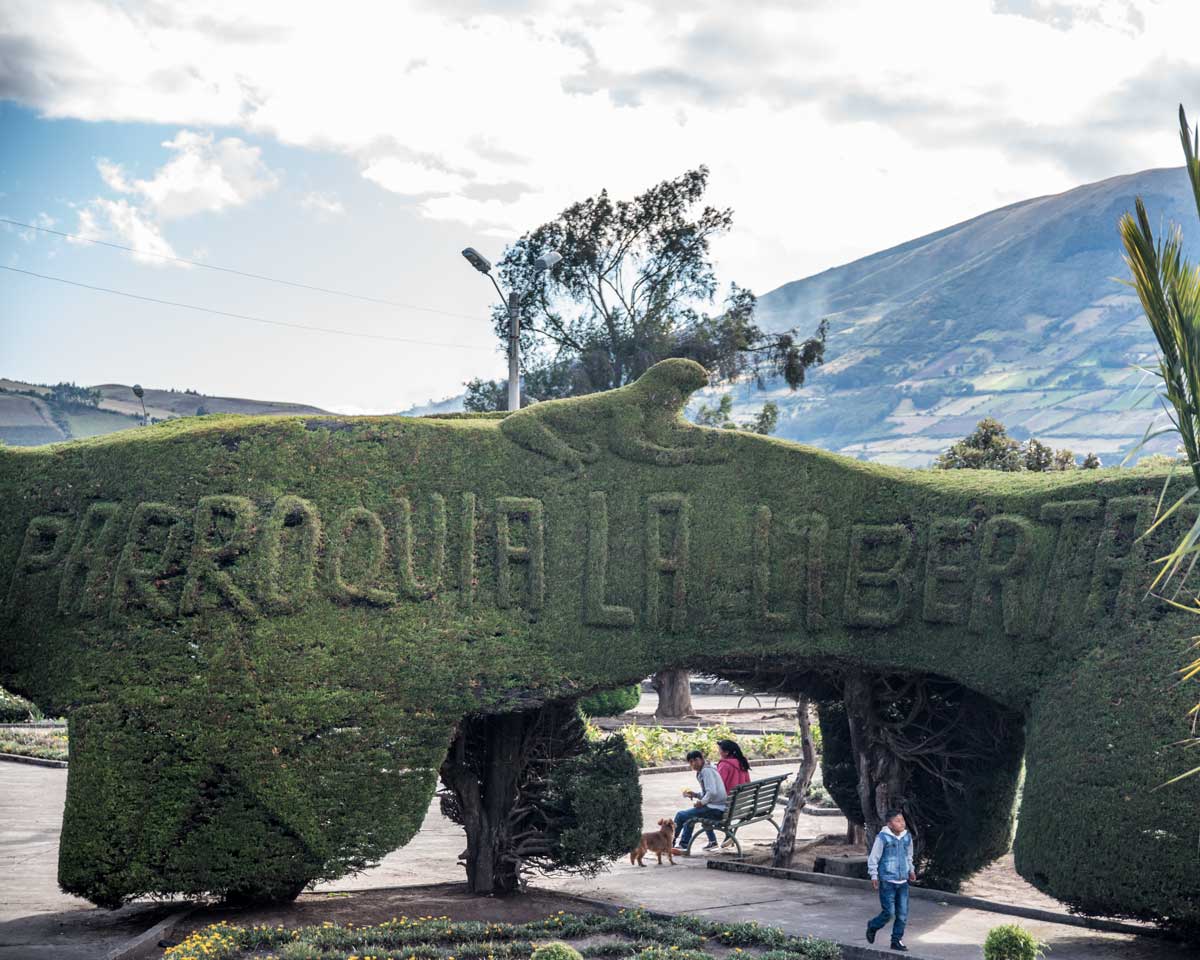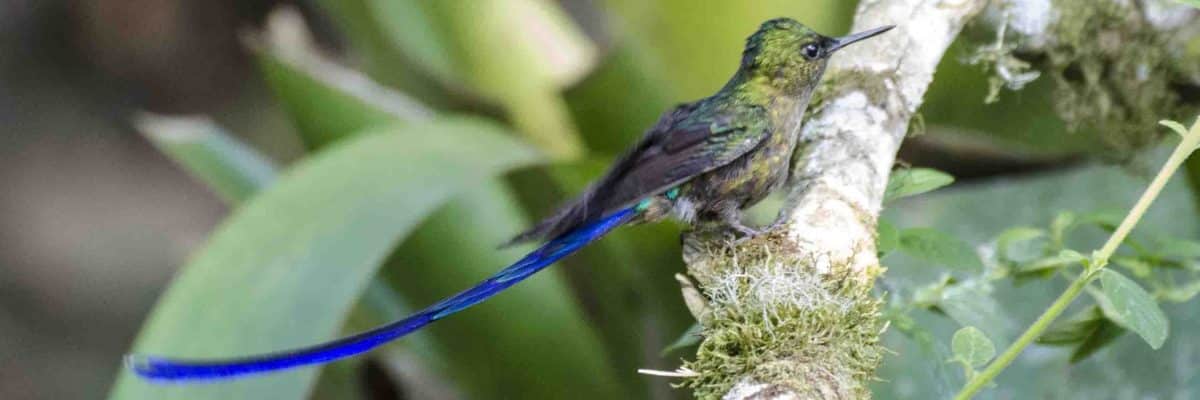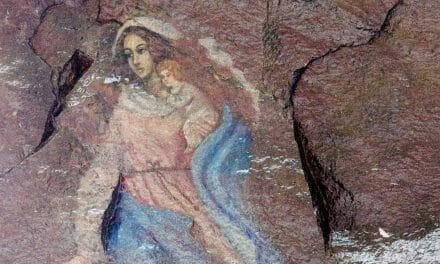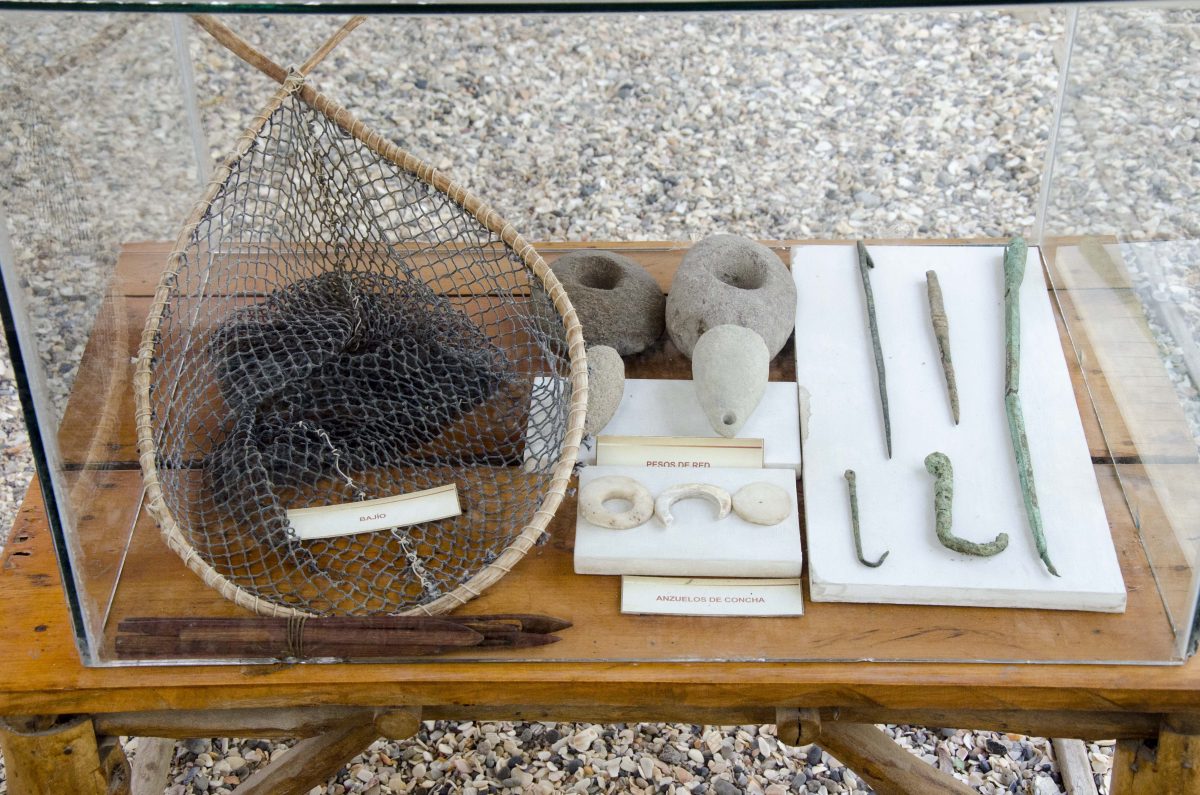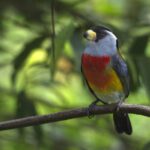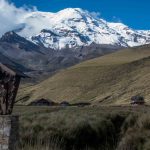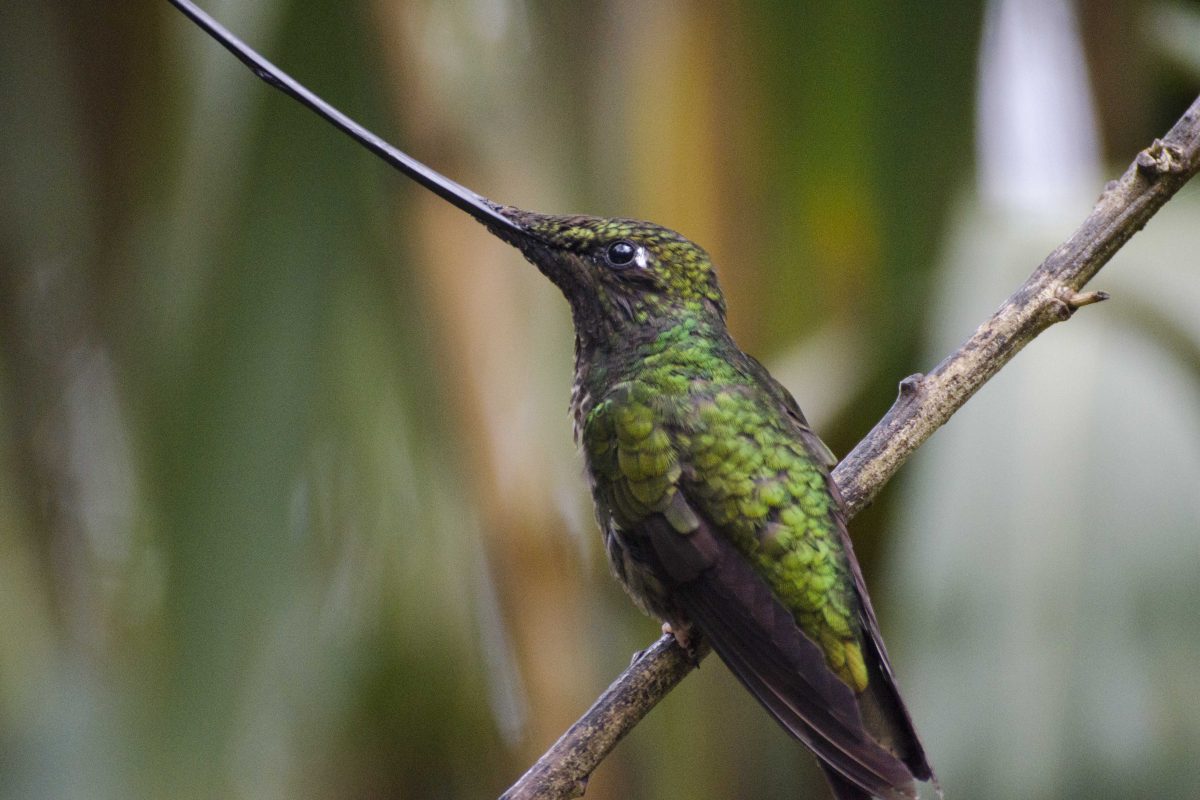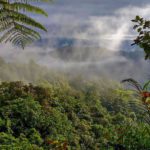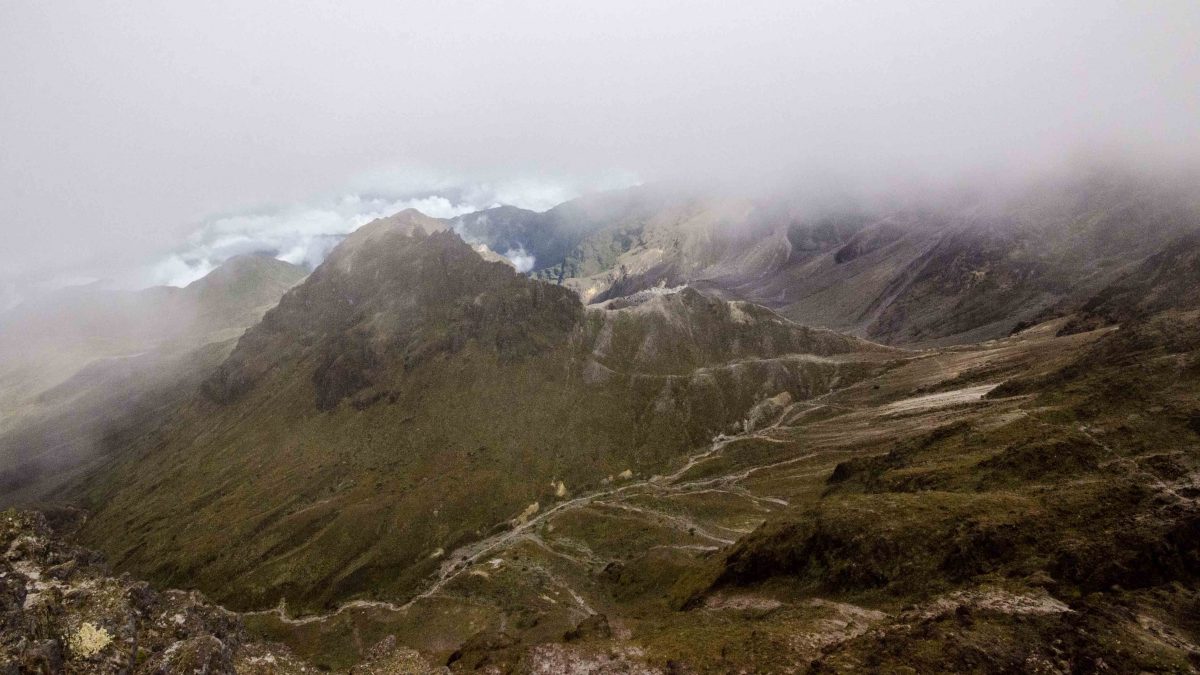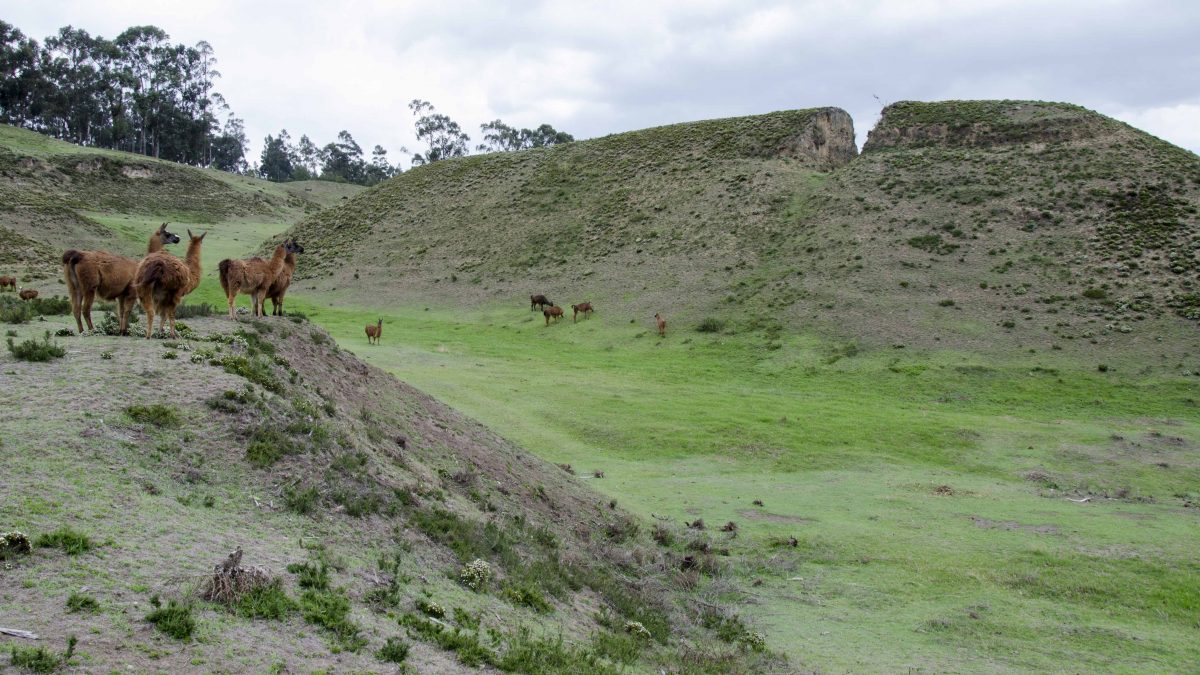When we heard the El Angel Reserve had an old-growth grove of Polylepis trees, it only made sense to visit as it was a short detour on our way from Tulcan to Quito. We’ve often gone out of our way to see this unusual member of the rose family. Once common in the Andes, it is rare to find remaining stands of Polylepis. A high-altitude tree, it grows at 8,800 feet and higher elevations. Over the centuries most have disappeared due to logging and farming.
But wait, more topiary!
On the way to the reserve, we were surprised to see topiaries in a number of town squares. As it turns out, the creator of the topiaries at the Tulcan Cemetery, Jose Franco, was born in the El Angel area. He helped the local towns develop their own topiary gardens. It was great to see the towns are continuing to care for these impressive displays.
A Millenial forest of thousand-year-old trees
After a challenging drive due to a lack of roadsigns, we arrived at our lodging which lies within a 30-acre grove of Polylepis growing at about 11,700 feet in altitude along a river valley on the north of the property. Given the slow growth of this type of Polylepis, the largest of the trees in the grove are more than a thousand years old, hence the name “millennial forest.”

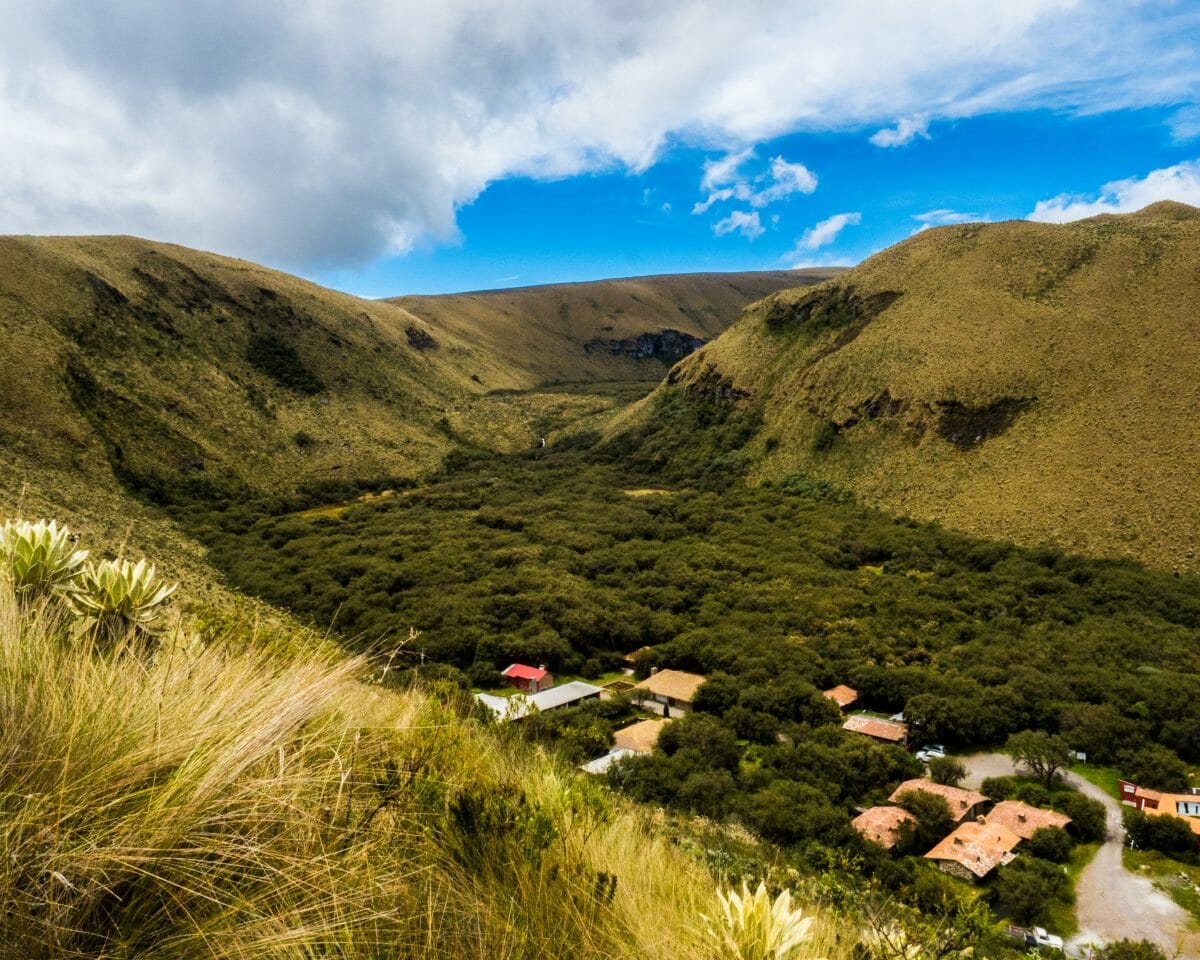
Given the harsh conditions in which Polylepis grow, most of the trees we’ve seen are gnarly and twisted. In some cases, we’ve seen trees growing nearly sideways due to the constant winds in the mountains. This grove was a pleasant surprise because the trees were able to gain a little bit of height, which adds to their fairy-tale nature. Although I do have to say, they are more of The Hobbit or The Wizard of Oz reach-down-and-grab-you kind of fairy-tale trees versus the happy-go-lucky kind.

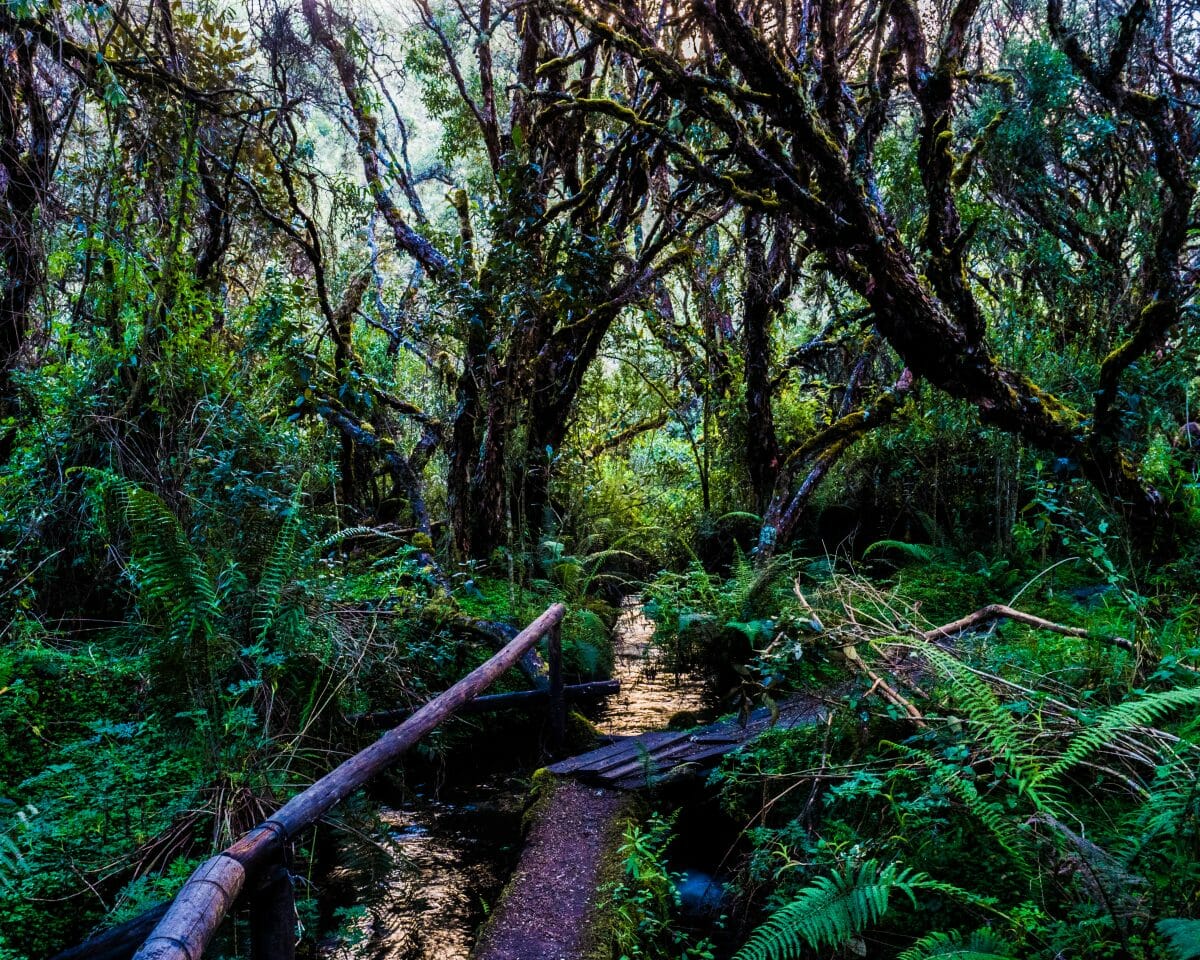
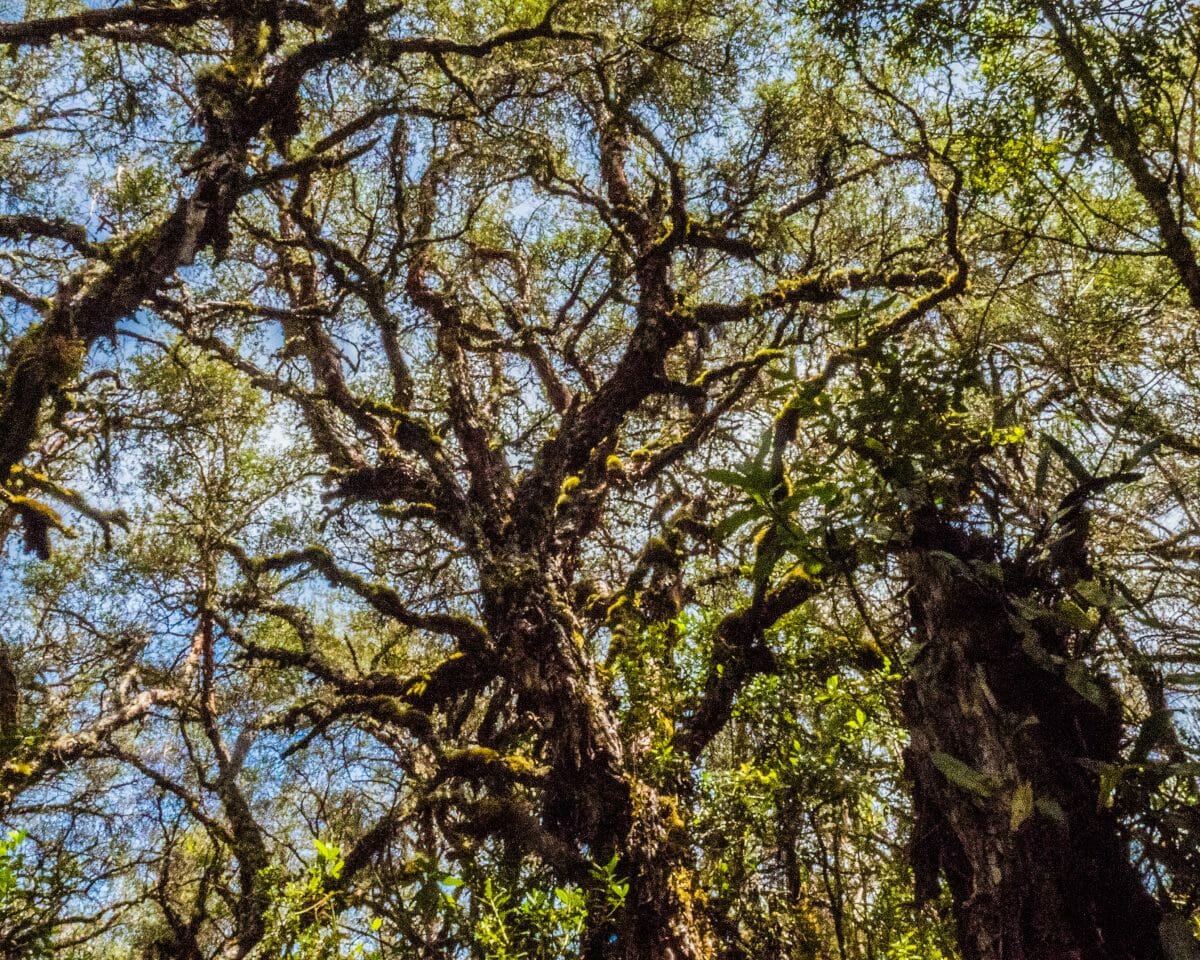
Friars in the mountains?
One thing we’d never seen before with Polylepis is an odd plant called a frailejón. Frailejones look like a big, upright tube with bunny ears on top. Evidentially, the early Spanish explorers thought they looked like Franciscan friars wearing hats (the word fraile is Spanish for friar). I don’t really see it, but the name stuck. To me, they look like the main characters of the 1960’s book and movie Day of the Triffids.
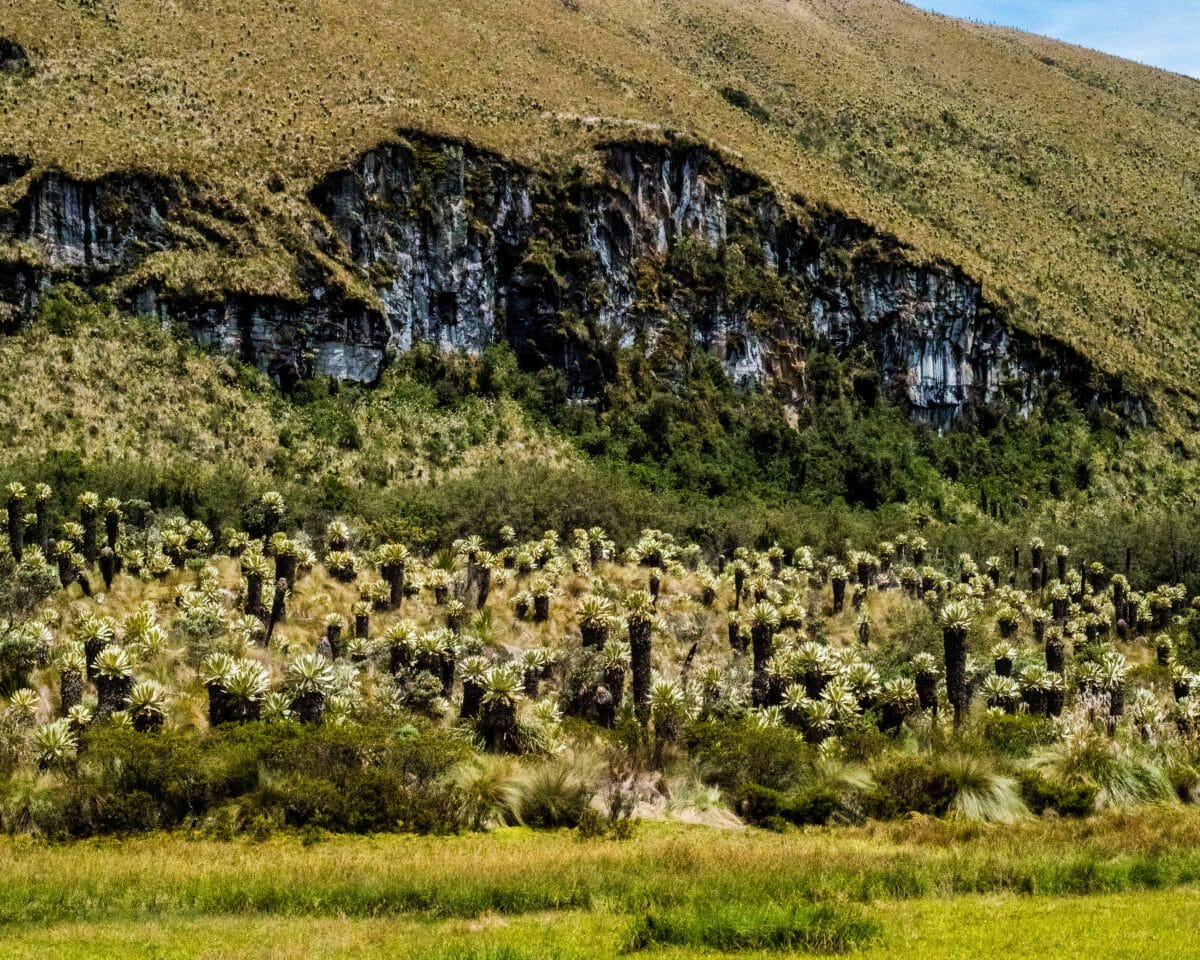
There are 142 identified species of frailejónes. They are only found at over 6000 feet in the high paramos of Venezuela, Colombia, and the very north of Ecuador. They are unusual enough that the El Angel Reserve was created specifically to protect the thousands of plants in this area. They play a key role in preventing erosion, transferring rainwater to the ground water system, and provide support to more than 125 animal species.
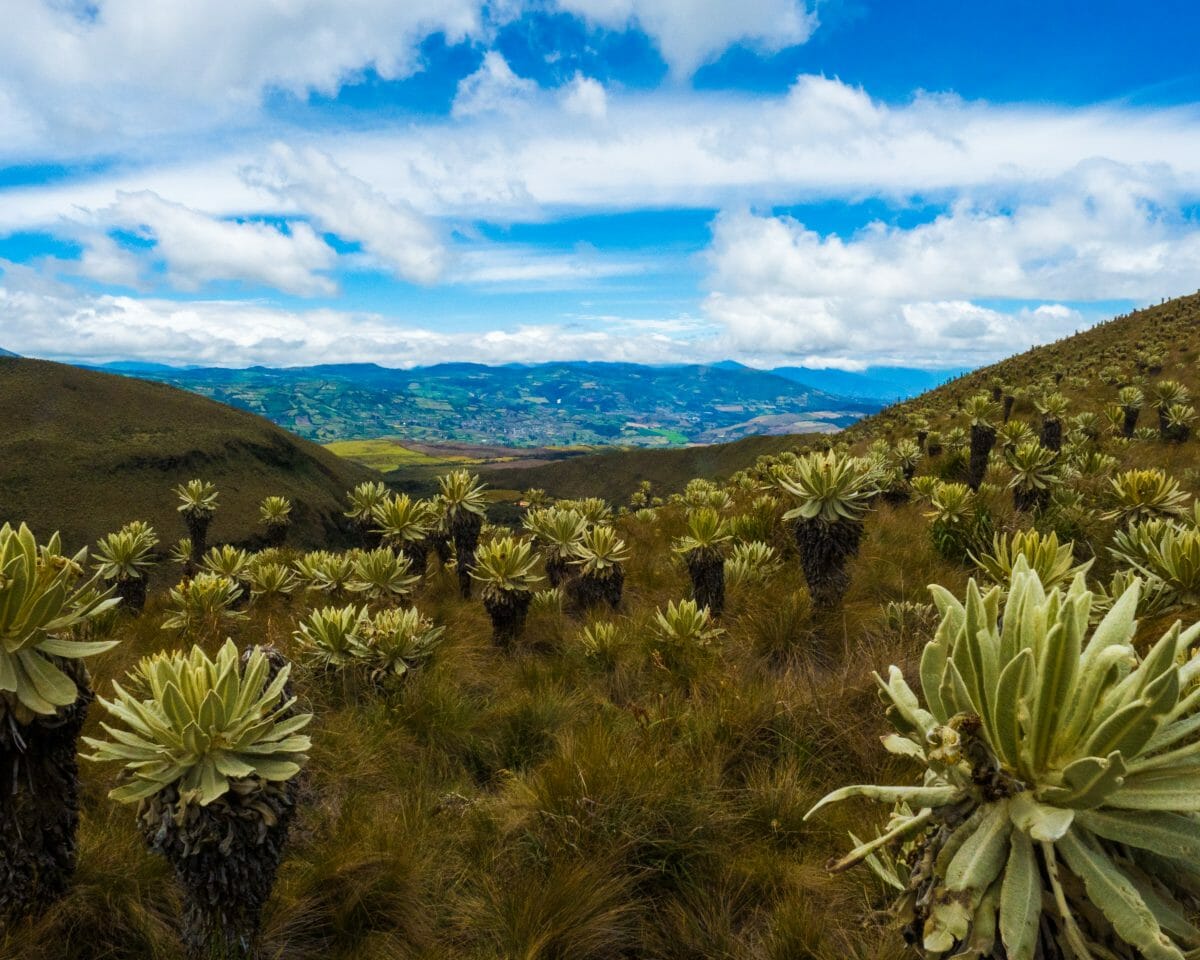
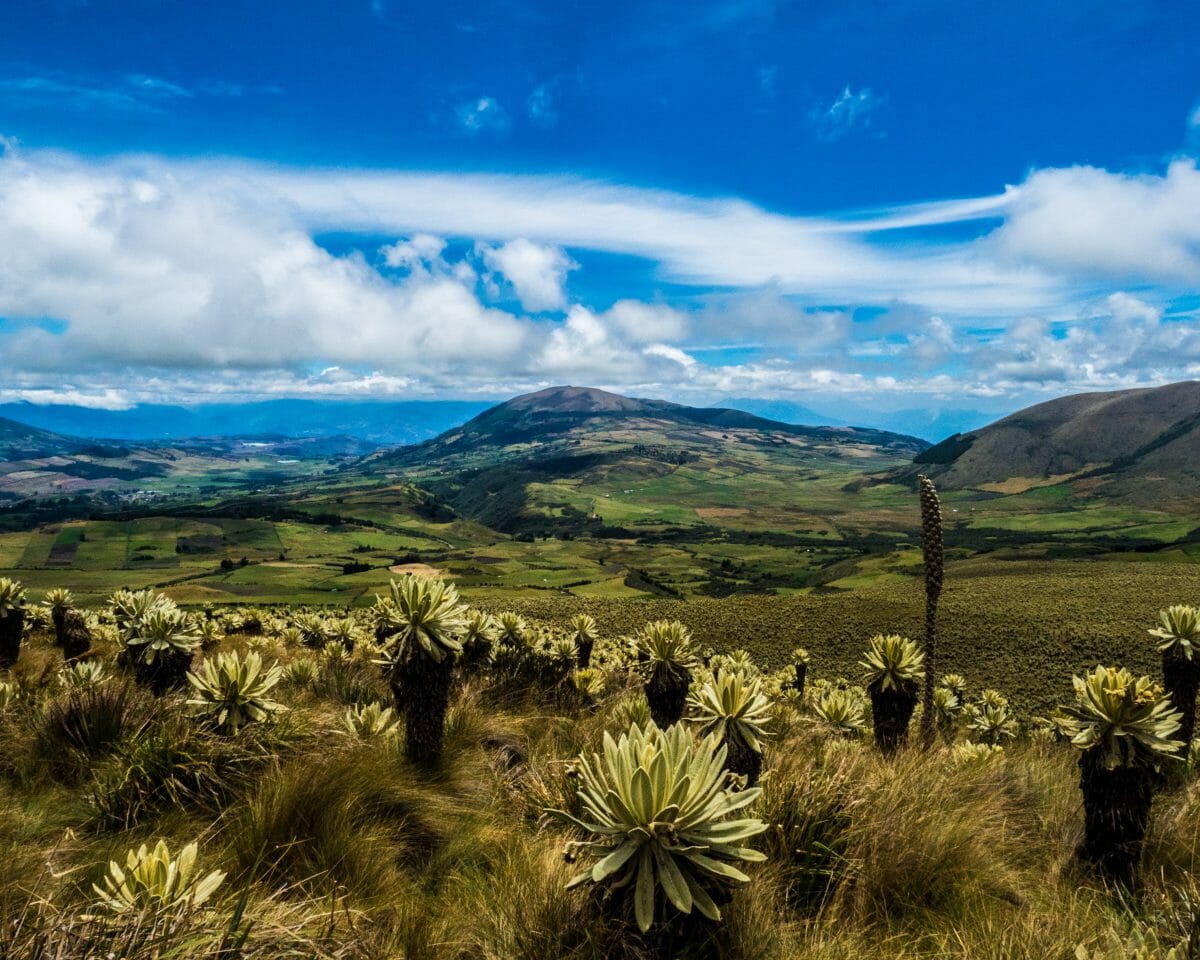
The softest thing in the paramo
The neatest thing about them is their “ears.” I’ve never encountered anything on a plant that feels quite so much like felt or fleece. As you can see below, they are covered in long strands of vegetable hair that seemed to just soak up the heat of the sun. Makes perfect sense why the native peoples in the paramos used these leaves as bedding and insulation for clothing.
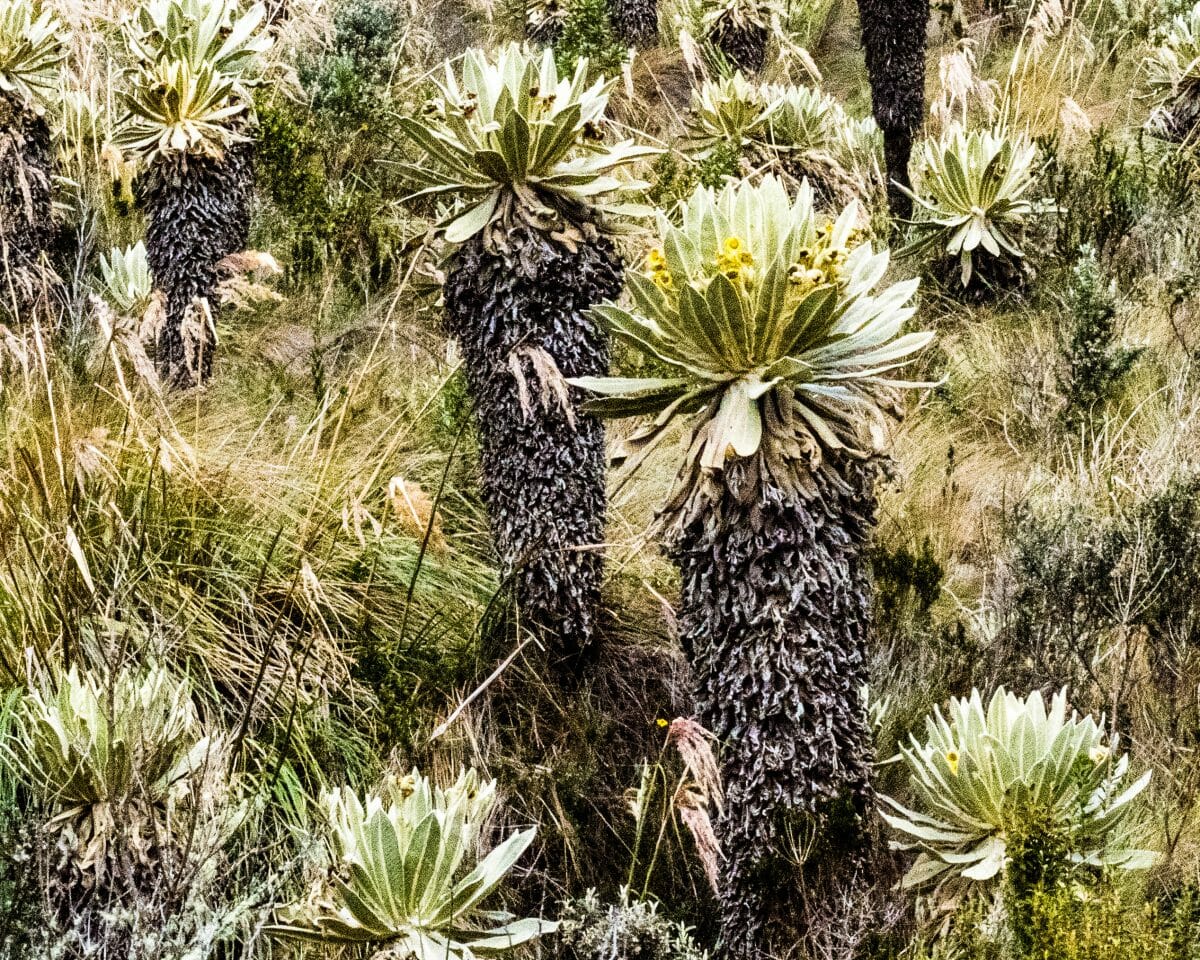

I can see for miles and miles….
This area also has some awesome scenery. We drove literally to the edge of the world to get these photos. What you’re looking at is the view from 13,000 feet above sea level towards the Pacific Coast of Ecuador. If the clouds weren’t there, you could even see the ocean since the horizon from this altitude is more than 130 miles away and the ocean is only 110 miles or so away. Unfortunately for us, and everyone else who’d love to see that view, it’s almost always cloudy. This is due to the hot coastal air hitting the cold air coming down from the Andes.

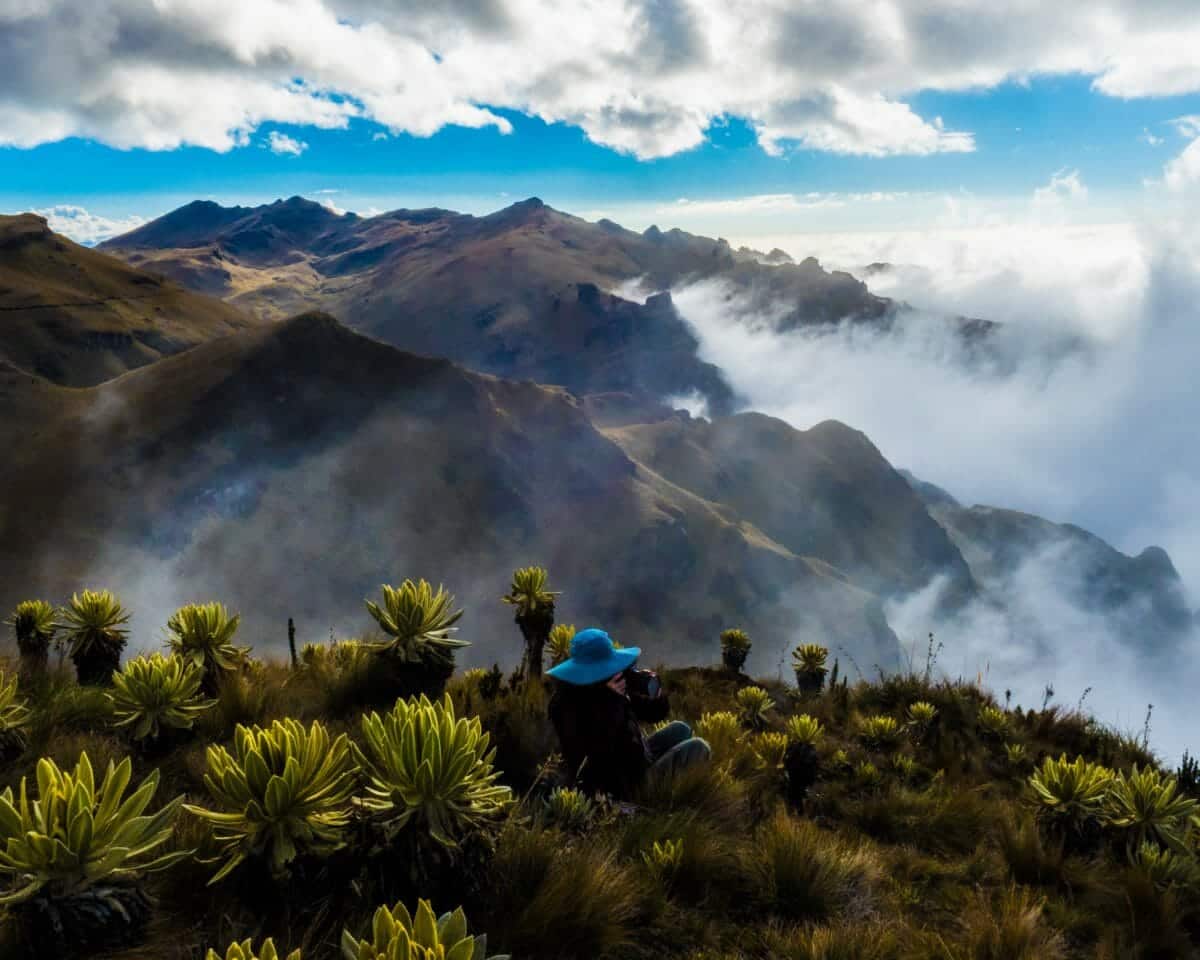
Visiting the El Angel Reserve
We stayed at the only lodge in the area as there are few options for overnight stays. Compared to other eco-lodges in Ecuador, we found the cost of our stay to be very high. As tourism grows in the Carchi Province, we are hoping to see more affordable options in the future. For now, if you are traveling on a budget, consider making this a day trip from a more populous area or turning this into a camping trip. As always, feel free to reach out with your questions!
El Angel Ecological Reserve
Information For Your Trip
The El Angel Reserve lies near the Colombian border of Northern Ecuador. It is difficult to get to without private transportation. We recommend hiring a driver or renting a car. It is possible to make this a day trip from either Tulcan or Ibarra.
Although our pictures show a sunny day, weather in this location is generally foggy, cloudy, misty, and very cold. Please bring cold weather gear and hot drinks or high energy snacks.
- Direction by Car, use WAZE and look for El Angel Ecological Reserve or the Polylepis Lodge. Please double check the lodge directions as at least one version only takes you as far as the town of El Angel.



